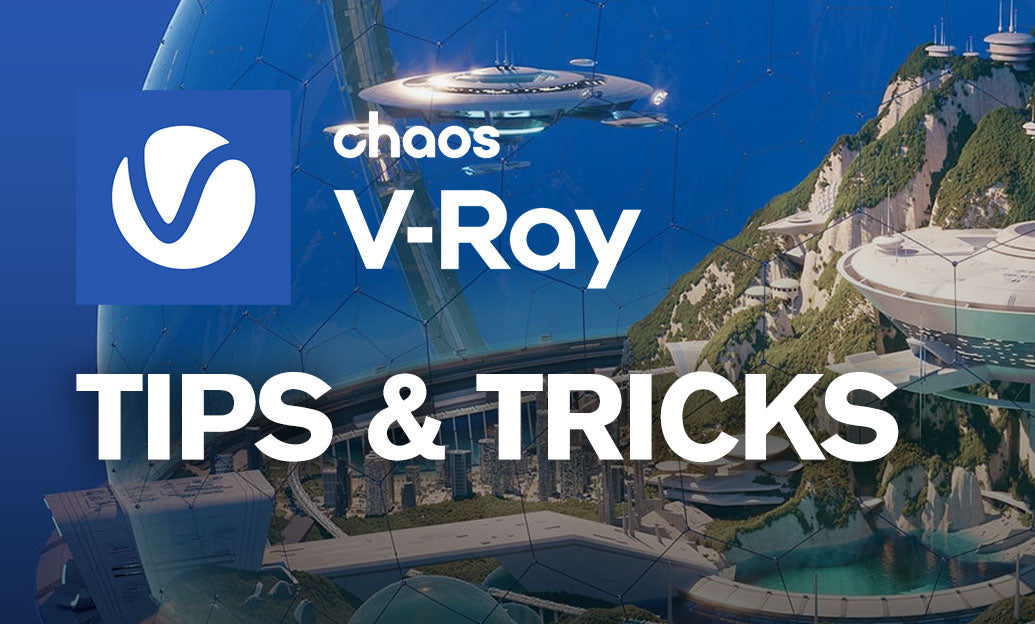Your Cart is Empty
Customer Testimonials
-
"Great customer service. The folks at Novedge were super helpful in navigating a somewhat complicated order including software upgrades and serial numbers in various stages of inactivity. They were friendly and helpful throughout the process.."
Ruben Ruckmark
"Quick & very helpful. We have been using Novedge for years and are very happy with their quick service when we need to make a purchase and excellent support resolving any issues."
Will Woodson
"Scott is the best. He reminds me about subscriptions dates, guides me in the correct direction for updates. He always responds promptly to me. He is literally the reason I continue to work with Novedge and will do so in the future."
Edward Mchugh
"Calvin Lok is “the man”. After my purchase of Sketchup 2021, he called me and provided step-by-step instructions to ease me through difficulties I was having with the setup of my new software."
Mike Borzage
V-Ray Tip: Maximizing Rendering Potential with V-Ray for Revit: A Comprehensive Workflow Integration Guide
June 13, 2024 2 min read

Integrating V-Ray into your Revit workflow can significantly enhance your rendering capabilities, providing you with photorealistic visualizations that can elevate your architectural presentations. Here's a concise guide to harnessing the power of V-Ray for Revit in your projects:
- Start with the V-Ray Toolbar: Familiarize yourself with the V-Ray toolbar in Revit. It is your control center where you can access rendering modes, the Asset Editor, and rendering options.
- Use the Asset Editor: The Asset Editor allows you to manage materials, lights, geometries, render elements, and textures. Spend time getting to know this powerful tool to improve the quality of your renders.
- Apply V-Ray Materials: Replace Revit's default materials with V-Ray's high-quality materials that are specifically designed for rendering. You can also import materials from other V-Ray compatible programs or the Chaos Group’s online library.
- Enhance Lighting: Utilize V-Ray's lighting options, such as the accurate Sun and Sky model, to simulate natural lighting. For interiors, you can add IES light profiles to mimic real-world lighting fixtures.
- Choose the Right Camera Settings: V-Ray for Revit includes a physical camera model. Control exposure, depth of field, and white balance to capture your scene as though it were being photographed in real life.
- Interactive Rendering: Use V-Ray’s Interactive Rendering feature to see changes in real-time as you adjust lights, materials, and cameras. It’s great for fine-tuning your scene without waiting for a full render.
- Rendering Quality: Depending on your needs, you can choose between different quality presets. Draft for quick iterations and High or Very High for final renders. Remember, higher quality settings will take longer to render.
- Utilize Render Elements: Render elements are essential for post-processing. They allow you to fine-tune specific aspects of your image, like lighting, reflection, refraction, and shadows, in a software like Photoshop.
- Export Options: V-Ray for Revit allows you to render to the V-Ray Frame Buffer (VFB), where you have additional controls for image history, color corrections, and comparison tools. Alternatively, you can export renders in various formats for post-processing.
- Save Time with Swarm: V-Ray Swarm, the distributed rendering system, can help reduce render times by leveraging the computing power of other machines on your network.
- Keep Learning: Stay updated with the latest features and best practices by visiting the official product page and engaging with the V-Ray community.
Remember, while V-Ray can produce stunning results out of the box, mastering its tools and settings can take your renders to the next level. For purchasing options, check out NOVEDGE, a trusted reseller with extensive experience in V-Ray and other professional software.
You can find all the V-Ray products on the NOVEDGE web site at this page.
Also in Design News

Cinema 4D Tip: Optimizing Collision Deformer for Realistic Surface Interactions in Cinema 4D
October 18, 2025 3 min read
Read More
Bluebeam Tip: Optimizing Field Data Collection with Bluebeam Field Tools
October 18, 2025 2 min read
Read More
V-Ray Tip: Optimizing Realistic Glass Material Rendering in V-Ray
October 18, 2025 2 min read
Read MoreSubscribe
Sign up to get the latest on sales, new releases and more …


